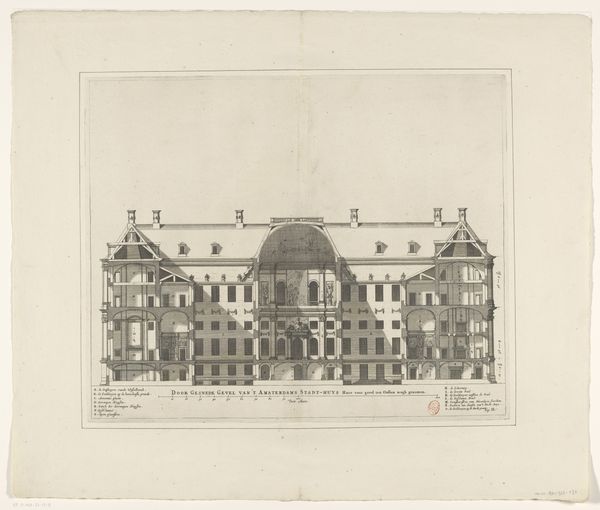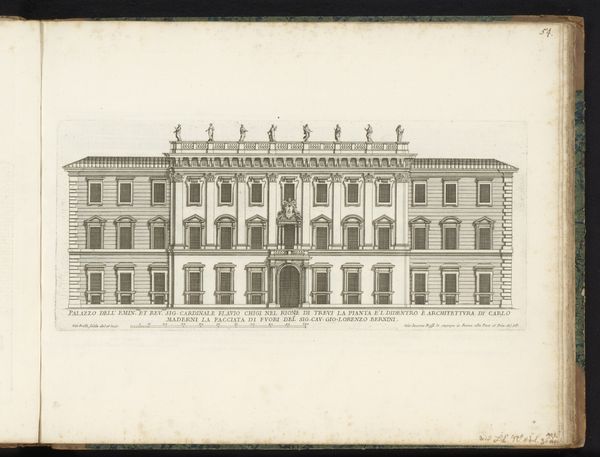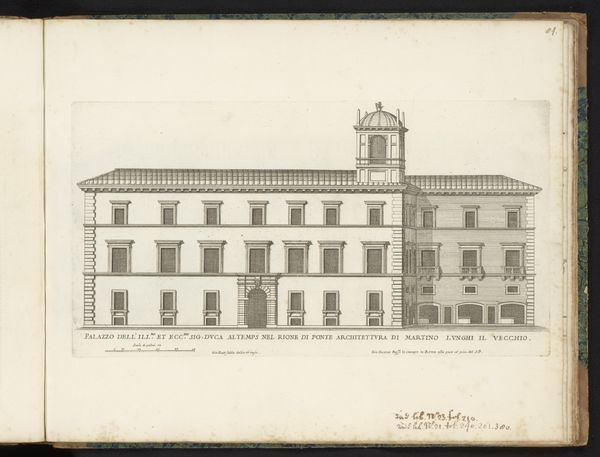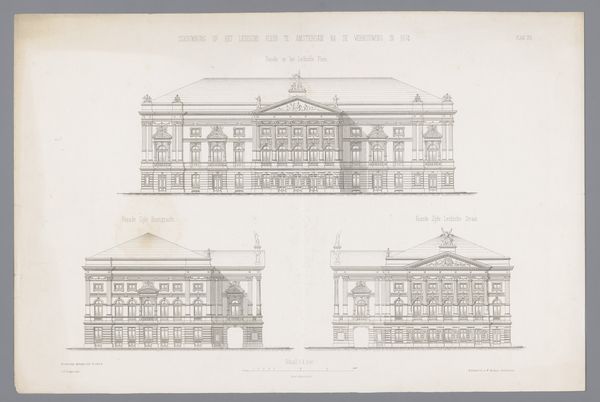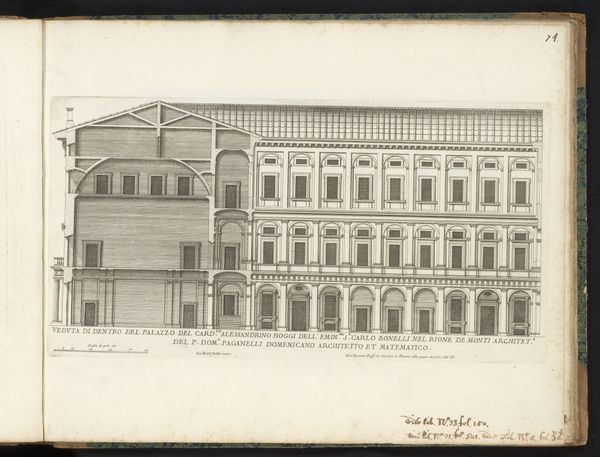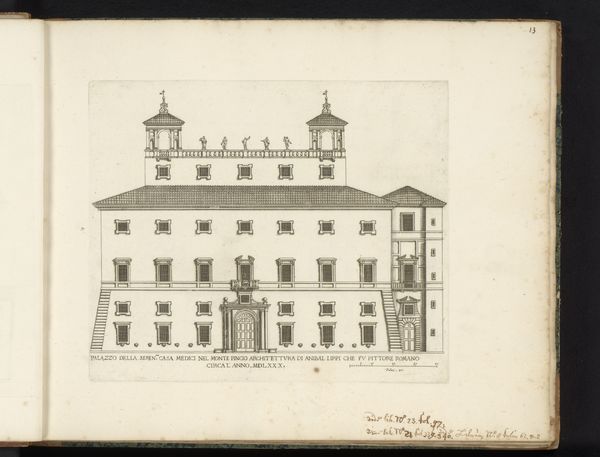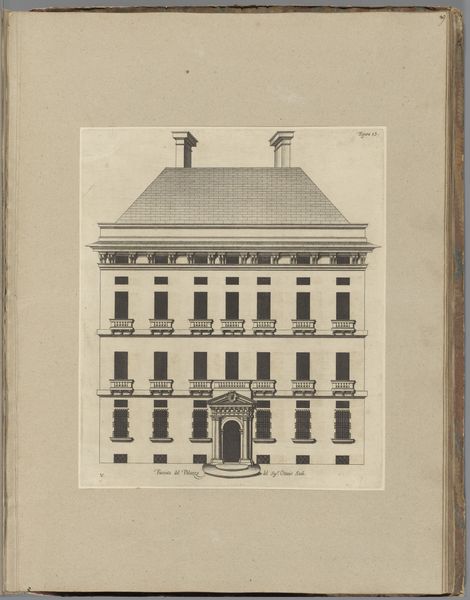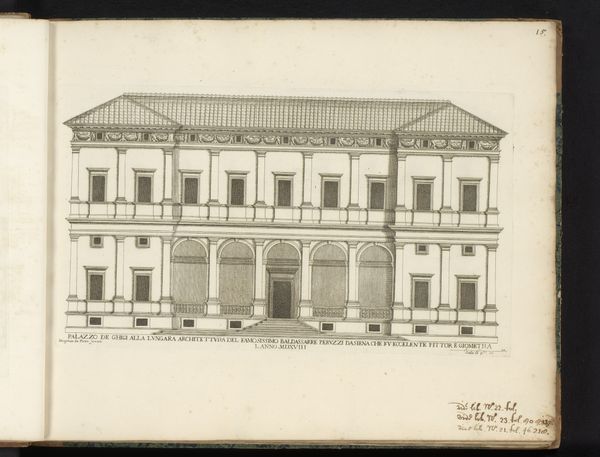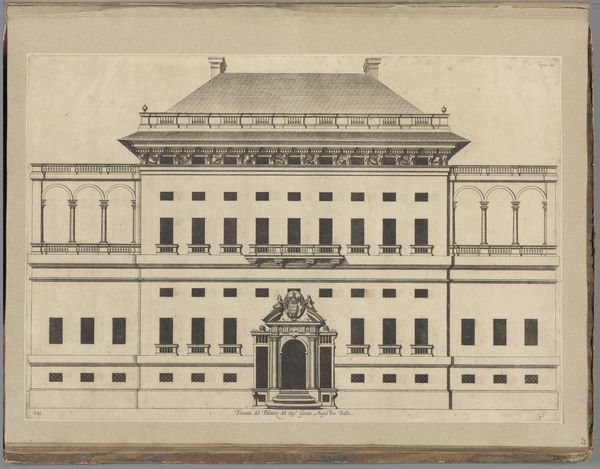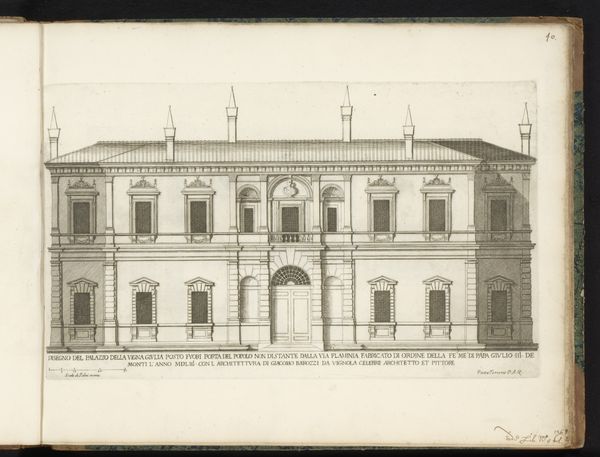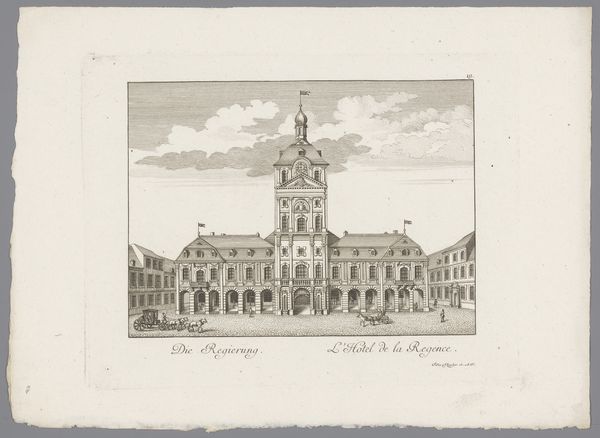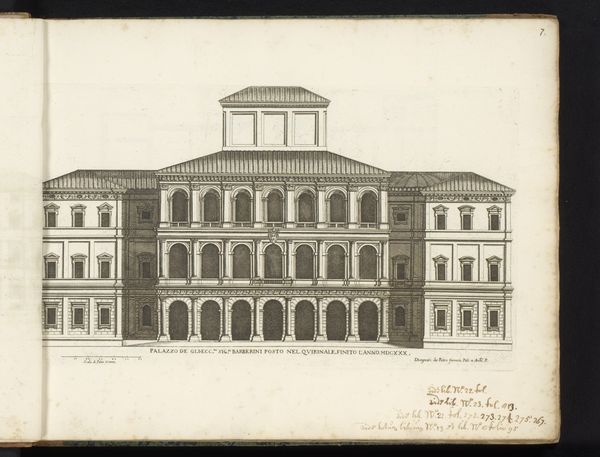
drawing, paper, ink, engraving, architecture
#
drawing
#
baroque
#
paper
#
ink
#
pen-ink sketch
#
line
#
cityscape
#
engraving
#
architecture
#
realism
#
building
Dimensions: height 210 mm, width 370 mm
Copyright: Rijks Museum: Open Domain
Curator: This detailed drawing is Giovanni Battista Falda’s "Façade van het Collegio Romano," created after 1655. The medium appears to be primarily ink on paper, showcasing a very linear, almost architectural rendering. Editor: My initial impression is of a building representing rigid structure. Its strict symmetry gives it a rather formal, even imposing character. All of the many windows resemble bars, adding to a sense of enclosure. Curator: Absolutely. Consider the role of institutions like the Collegio Romano within 17th-century society. As a prominent Jesuit school, the architecture here serves to communicate the order and intellectual authority upheld within its walls. Falda's line work—the controlled strokes of ink—echoes that emphasis on discipline and reason. Editor: Thinking about Falda creating this representation using ink—we have to consider how this act is deeply connected with material access and consumption. Ink in the 17th century was tied to literacy, class, and the spread of ideas. Who had access to this knowledge and these materials, and how does that affect what could be memorialized in art? Curator: That's a fantastic point. And considering the historical context, the Baroque style here is quite subdued. Where are the extravagant embellishments? Instead, there’s a conscious presentation of the institution’s rational foundations through measured, careful artistry. The artist’s style could perhaps reflect broader social shifts influencing patronage. Editor: Exactly! Even the realism—the seeming exactitude—is strategic. How is realism employed to give power to a seat of religious knowledge? Is it perhaps attempting to normalize particular patriarchal systems during the Counter-Reformation, masking less palatable, historical complexities with that emphasis on rigid order and visibility? Curator: I see your perspective entirely. The interplay between visibility and power is important here. I agree, that what the drawing emphasizes becomes a form of rhetoric, a calculated image that tells a specific institutional story. It's so valuable to investigate the underlying labor, context and assumptions, embedded in what might initially strike one as an impartial, architectural study. Editor: Precisely. This exercise underscores how even the seemingly straightforward image is profoundly layered with sociopolitical meanings and echoes ongoing historical struggles. The artist has created something visually pleasing, sure, but one should also examine how the pleasing and familiar might enforce oppressive beliefs or ideals.
Comments
No comments
Be the first to comment and join the conversation on the ultimate creative platform.


